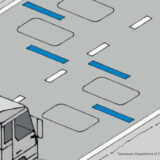Statewide Multimodal Freight Plan seeks public input
Truckers have another opportunity to shape a state’s freight policy by submitting input for North Carolina’s Statewide Multimodal Freight Plan, and truck parking appears to be a problem for many.
In an effort to update its Statewide Multimodal Freight Plan, the North Carolina Department of Transportation is seeking public comments. NCDOT needs help identifying issues and future opportunities with freight movement in the state.
The survey is available through Friday, June 17. Click here to access the survey.
According to NCDOT, “input will help guide the Freight Plan Update and identify ways that NCDOT can support efficient and effective movement of freight.”
Experiencing issues with truck parking in certain parts of North Carolina? Let the state know by leaving a note in the Statewide Multimodal Freight Plan.
As of June 16, there were fewer than 100 responses for each question in the survey. Truckers appear to be well represented, but the survey still needs more industry feedback.
The government and trucking industry appear to be the most engaged with the process. More than 40% of respondents represent the public sector. Nearly 40% represent long haul freight carriers. The remaining 20% of respondents identify themselves as other types of stakeholders.
One question asks participants to select areas that need the most work. More than half of respondents indicated that trucking/truck parking is an issue, trailing only roads/highways by a few percentage points. About a quarter of respondents find regulations need some work.
The top three freight highway challenges are congestion, truck parking, and first/last mile connections.
Trucking is also the most popular mode of freight that Statewide Multimodal Freight Plan survey respondents. About three-quarters use trucks the most among all other modes.
More than half of respondents are rating North Carolina’s multimodal freight transportation system as “satisfactory,” which is neither good nor bad. There is more consensus with the state’s ports, with nearly two-thirds rating that system as satisfactory. LL









